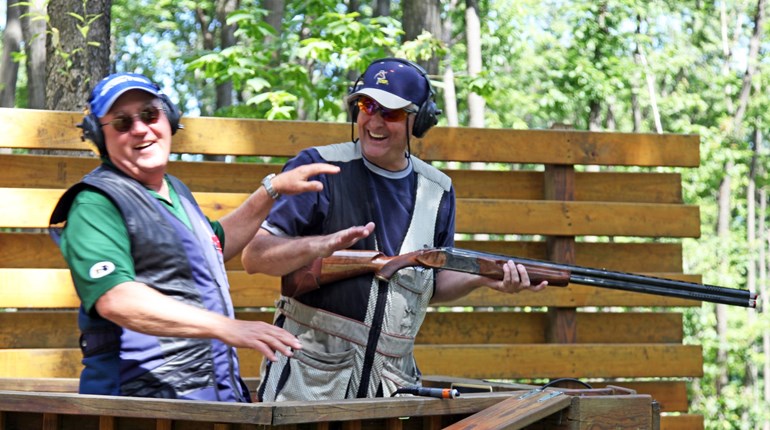
Interested in handgun hunting? Join the crowd! I’ve introduced countless new shooters to the sport, and have some tips for a safe, enjoyable training experience. In this article, I will focus on revolvers and single-shot handguns for training, and then eventual field use for hunting.
Get Started with Hand and Arm Strength
If you cannot hold a handgun out without excessive shake, even with a rest, your accuracy suffers along with confidence. Here is where 2-to-5-pound hand weights and a grip strengthener are helpful. I do this before breakfast as I watch the news:
- I use 5-lb. weights in each hand, holding them out in front of me for a count of 5, then to my sides for another count of 5 and then down to my sides. This is repeated 20 times!
- Then with a 5-lb. weight in each hand, I push one at a time out in front of me slowly, which looks like boxing. This is done 20 times with each hand/weight!
- To finish, I squeeze a hand grip strengthener in the right hand 20 times, then the left. Now I get my breakfast!
Start with a Good “Pellet” Revolver
Years ago, I started my granddaughters when they were around 10 with a Dan Wesson 715 CO2 double-action pellet revolver with a 2.5” barrel. The short barrel kept it lightweight and we shot it on my garage range (see Grandparent’s Guide to Safe BB Gun Backstops). I also used it in helping a friend and his wife get into handguns and again saw how this introduction was quite helpful when moving into a rimfire revolver. All the safety and accuracy techniques learned with that BB gun carry on to the larger handguns and calibers.
Move up to a Rimfire Revolver or Single Shot
To get started with any handgun for hunting, I highly recommend it have adjustable sights. This is important since it can be sighted to hit exactly where you desire at a specific distance and with the preferred ammo. Later you can add a scope. When starting out, stick with a rimfire, such as a .17 HMR or .22 LR, since with practice, you learn the mechanics and with that, develop confidence.
Before Range Shooting, Try Dry-Fire with Snap-Caps
These are usually orange plastic or aluminum “ammo.” They allow you to dry-fire a rimfire gun safely while protecting your firing pin. You can load as you would “real” ammo, and then squeeze the trigger as you would to fire. Importantly, remove all live ammunition from the room before you do this. ALWAYS POINT THE MUZZLE IN A SAFE DIRECTION AND VERIFY THAT WHAT YOU ARE LOADING IN YOUR HANDGUN ARE SNAP CAPS. Do this at the range and then move into using real ammo!
Sighting-in & Knowing the Bullet’s Drop at Various Distances
I recommend starting from a bench and shooting at 10 yards, then move out to 25, then 50-100 or so. Once I know the bullet’s drop, and if I’m firing over 100 yards, I put all this information on my scope for easy reference. It’s critical to know that when a revolver is fired, gases go out from the cylinder gap. If that area is resting against a sandbag, those gases can cut a hole in the bag! Be careful what type of rest you use with revolvers.
With Confidence, Move Up in Calibers
When moving up the ladder after being comfortable with the rimfire, a .357 Magnum is the next good choice. I still have my Colt Python which I used 55 or so years ago to harvest my first whitetail.
When I began seriously handgun hunting, the legendary JD Jones of SSK Industry fame invited me to spend a day with him on the range. With that visit, JD got me started with the Thompson/Center Arms Contender in one of the best and baddest handgun calibers of my time, the .375 JDJ. It was a good move since I began hunting whitetail with a Colt Python in .357 Magnum when 18 (times sure have changed)!
Then in revolvers, I moved up from the .44 Magnum (which is a good handgun caliber) to the .454 Casull, .460 and .500 S&W Magnums. I have used these successfully for wild boar, deer, pronghorn, caribou, elk, bear and predators.
You, the Handgun Hunter
Once the basics are learned, try single-action revolvers and/or single shots. It is always a good move to have a barrel or handgun in the .22 LR for that constant familiarity and so to continue to be a good shot, practice. Good Luck!






































